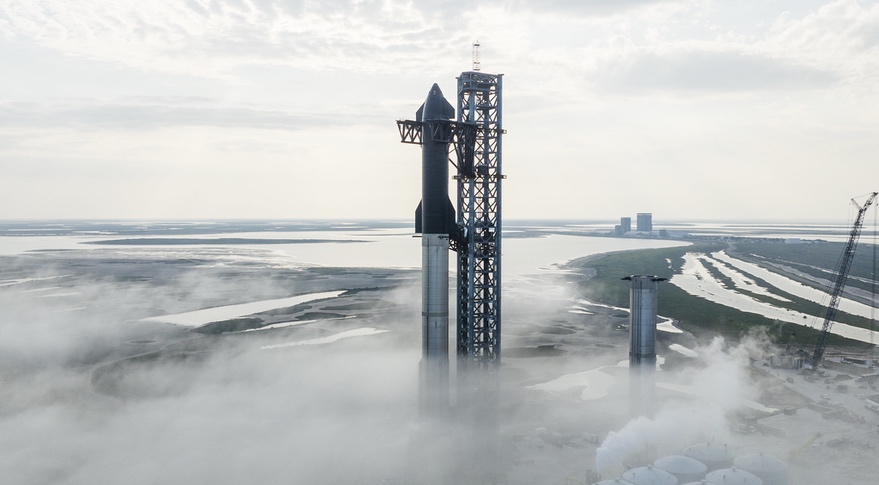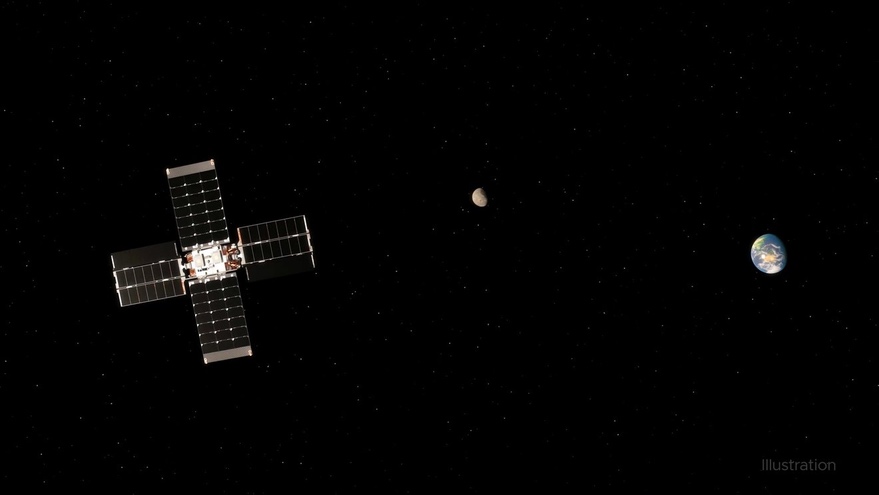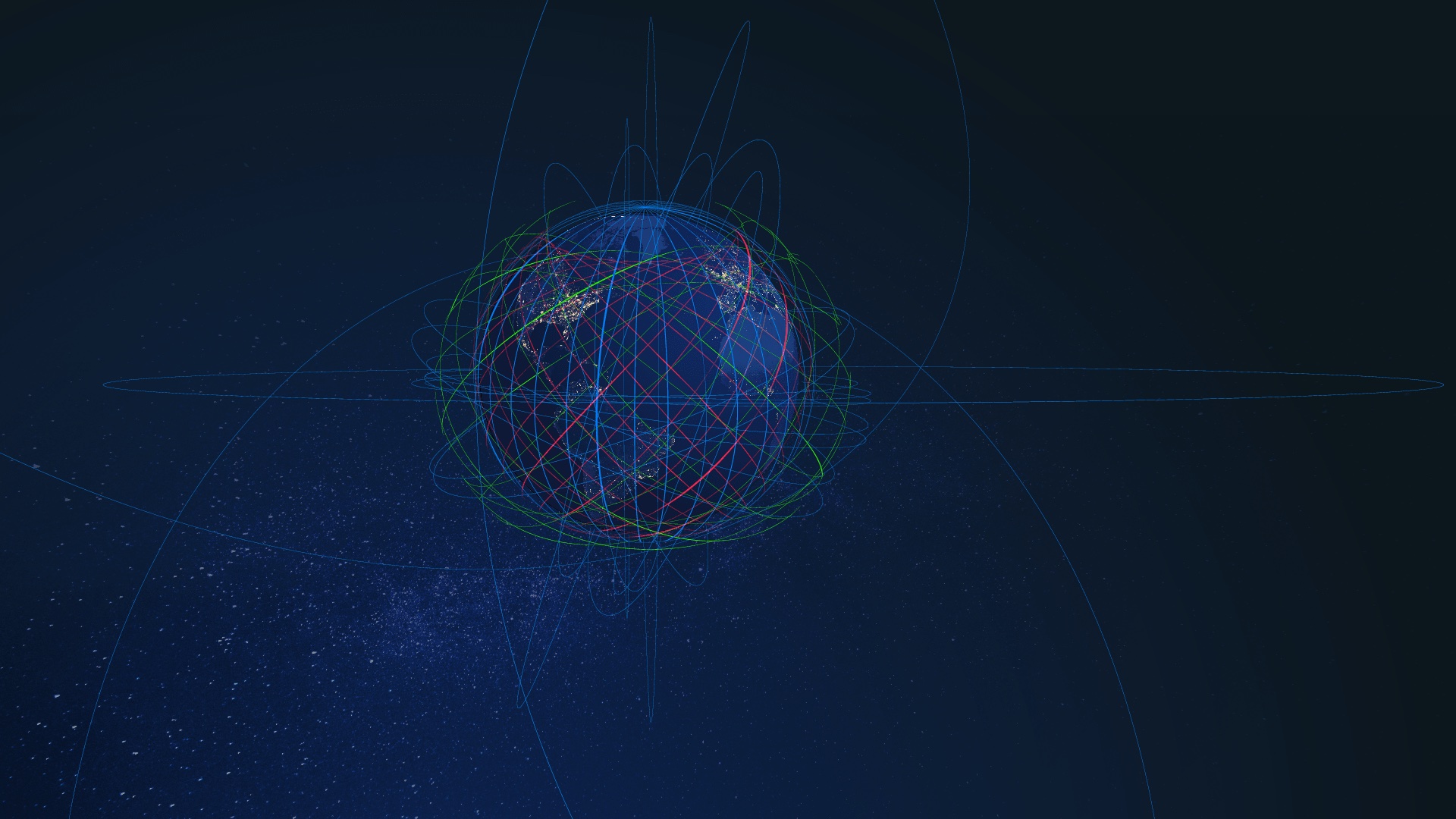SpaceX edges closer to first Starship orbital launch attempt
Original Publication Date: 2023-01-13 13:05

SpaceX is moving ahead with a final series of tests of its Starship vehicle and Super Heavy booster. The company installed a Starship vehicle called Ship 24 on top of a Super Heavy booster. SpaceX did not estimate when that launch could take place other than the "weeks ahead"
NASA studying thruster problem with lunar cubesat
Original Publication Date: 2023-01-14 22:52

Engineers are troubleshooting thruster problems on a cubesat launched last month. The Lunar Flashlight cubesat was designed to search for water ice at the moon. The spacecraft will need to start daily maneuvers in February to be able to enter orbit around the moon. It is the latest in a series of technical issues among small satellites recently launched.
Analyzing intelligence in the age of ChatGPT - SpaceNews
Original Publication Date: 2023-01-14 15:00

Chatbot ChatGPT gained notoriety for its ability to engage in seemingly human-like conversations. Applications in national security and space are poised to benefit from this new age of AI. For intelligence analysts trying to predict a hostile act in space or on Earth, generative AI could be game-changing.
NorthStar using Axelspace’s Earth-imaging satellites to monitor orbits
Original Publication Date: 2023-01-13 21:35

Five Earth observation satellites from Japan’s Axelspace are helping NorthStar Earth and Space. Software update has enabled satellites to collect SSA data as they periodically travel across the dark side of the planet. The satellites can collect data on LEO objects above their own operational altitude of 585 kilometers.
Space Force weighing new approach for selecting national security launch providers
Original Publication Date: 2023-01-13 20:22

The changes would affect the National Security Space Launch (NSSL) Phase 3 procurement. United Launch Alliance and SpaceX won the Phase 2 competition in 2020. Their current contracts will be re-competed in 2024. An option under consideration for NSSL Phase 3 is to create “on ramps”
NASASpaceFlight.com
India launches a new ocean monitoring satellite on Saturday morning. The PSLV rocket delivered the EOS-06 spacecraft into a low Earth orbit. The mission, PSLV C54, lifted off from the Satish Dhawan Space Centre at 11:56 local time (06:26 UTC)
Commercial Archives
SpaceX is preparing to carry out the first Starlink launch of 2023 with a mission that will place 51 satellites into orbit. The Group 2-4 mission, which was delayed from November, is now slated for liftoff at 8:18 AM PST Sunday (16:18 UTC)
International Archives
China has launched two more missions to orbit. First, a Chang Zheng 2C launched from the Xichang Satellite Launch Center (XSLC) on Thursday at 18:10 UTC, carrying APStar-6E. On Friday, a Chang Zheng2D was launched from the Jiuquan Satellite Launch Center (JSLC), carrying the Yaogan-37 & Shiyan-22 A/B payloads.
News – Spaceflight101

Russia's Rockot booster is set to blast off from the Plesetsk Cosmodrome at 17:57 UTC with the Sentinel-3B multi-function satellite. Sentinel-3B is the latest addition to Europe's Copernicus satellite fleet. The Russian Rockot booster is expected to launch at 17:57 GMT on Wednesday.
ISS Updates – Spaceflight101 – International Space Station

A veteran NASA spacewalker and an EVA rookie from Japan ended their week with nearly six hours of work outside the International Space Station. The restoration of the Station’s Mobile Servicing System started last year and continued in January to provide Canadarm2 with a new pair of grappling hands.
Featured – Spaceflight101

SpaceX Falcon 9 takes to the skies over Florida’s Cape Canaveral Monday afternoon. Falcon 9 will lift a flight-proven Dragon spacecraft into orbit for a critical delivery of science gear, supplies and maintenance hardware to the International Space Station. It will be the first of at least six cargo ships inbound to the U.S. Segment of ISS this year.
Re-Entry: Long March 11 Rocket Body – Spaceflight101

The CZ-11 fourth stage used leftover propellant for a partial de-orbit maneuver, lowering its perigee to 120 Kilometers to significantly accelerate its orbital decay. It is reportedly built around a YF-50 main engine and in a nominal mission conducts the orbital circularization after the three CZ-11 stages finish their job.
NASA’s Lunar Flashlight Team Assessing Spacecraft’s Propulsion System

Lunar Flashlight will use a new laser reflectometer built with four near-infrared lasers to shine a light into the permanently shadowed craters at the lunar South Pole to detect surface ice. The mission will employ an energy-efficient near-rectilinear halo orbit, taking it within 9 miles (15 kilometers) of the lunar South Pole and 43,000 miles (70,000 kilometers) away at its farthest point.
NASA Scientists and Satellites Make Sense of Earth’s Subtle Motions

Earthquakes occur at places where two sides of a fault line have become stuck together, or locked. Creeping faults are less likely to produce large earthquakes because the motion relieves much of the stress. With data collected from dozens of NASA airborne InSAR flights since 2009, scientists are mapping where the Hayward Fault is creeping.
NASA’s TESS Discovers Planetary System’s Second Earth-Size World

Astronomers have identified an Earth-size world, called TOI 700 e, orbiting within the habitable zone of its star. The world is 95% Earth’s size and likely rocky. Astronomers previously discovered three planets in this system, called TOi 700 b, c, and d. But scientists needed an additional year of TESS observations to discover TOI 700 e.
NASA Wants You to Help Study Planets Around Other Stars

Exoplanet Watch is a new program from NASA that allows people to look for planets outside our solar system. Participants can use their own telescopes to detect planets, or they can look for exoplanets in data from other telescopes using a computer or smartphone. Exoplanet Watch began in 2018 under NASA’s Universe of Learning program that enables anyone to experience how science is done.
NASA Space Missions Pinpoint Sources of CO2 Emissions on Earth

Emissions from large facilities such as power plants and refineries account for about half of global carbon dioxide emissions from fossil fuels. Bełchatów Power Station, in operation since 1988, is the largest lignite-fired power plant in the world. The Polish government has drafted plans to close the plant by the end of 2036.
Watch the Latest Water Satellite Unfold Itself in Space

The Surface Water and Ocean Topography (SWOT) satellite launched into Earth orbit on Friday, Dec. 16. The solar arrays fully deployed shortly after launch, taking about 10 minutes. The mission monitors and controls the satellite using telemetry data, but it also equipped spacecraft with four customized commercial cameras to record the action.
Construction Begins on NASA’s Next-Generation Asteroid Hunter

NASA’s Near-Earth Object Surveyor (NEO Surveyor) recently passed a rigorous technical and programmatic review. Now the mission is transitioning into the final design-and-fabrication phase. The mission supports the objectives of NASA’s Planetary Defense Coordination Office (PDCO) at NASA Headquarters in Washington.
